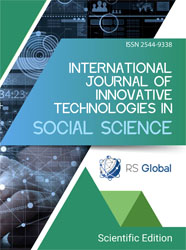GIGANTIC PERICARDIAL CYST CAUSING PALPITATIONS - CASE REPORT
Abstract
Pericardial cysts are rare mediastinal tumors, often asymptomatic but potentially causing cardiovascular symptoms through compression of adjacent structures. We present the case of a 63-year-old woman with an incidentally detected mediastinal cyst adjacent to the right atrium. Initially asymptomatic, she later developed palpitations, dyspnea, and exercise intolerance. Imaging revealed significant compression of the right atrium and valvular regurgitation. Surgical intervention included mitral valve repair, cyst excision, and drainage of exudative fluid. Histopathology confirmed a pericardial cyst. Postoperative follow-up demonstrated normal valve function and resolution of symptoms. This case highlights the importance of timely surgical management of symptomatic pericardial cysts to prevent cardiac complications.
Video A. Transthoracic echocardiography (TTE), 4-chamber view, showing a fluid-filled lesion near the right atrium. Watch video
References
Kar, S. K., & Ganguly, T. (2017). Current concepts of diagnosis and management of pericardial cysts. Indian Heart Journal, 69(3), 364–370. https://doi.org/10.1016/j.ihj.2017.02.021
Głowacki, J., Florek, S., Suchodolski, A., & Wasilewski, J. (2021). Small hiatal hernia as a risk factor of atrial fibrillation. Polish Journal of Radiology, 86, e1–e3. https://doi.org/10.5114/pjr.2021.102203
Views:
54
Downloads:
19
Copyright (c) 2025 Marcin Schulz, Alexander Suchodolski, Anna Kowal, Magdalena Królikowska, Jan Głowacki, Mariola Szulik

This work is licensed under a Creative Commons Attribution 4.0 International License.
All articles are published in open-access and licensed under a Creative Commons Attribution 4.0 International License (CC BY 4.0). Hence, authors retain copyright to the content of the articles.
CC BY 4.0 License allows content to be copied, adapted, displayed, distributed, re-published or otherwise re-used for any purpose including for adaptation and commercial use provided the content is attributed.















